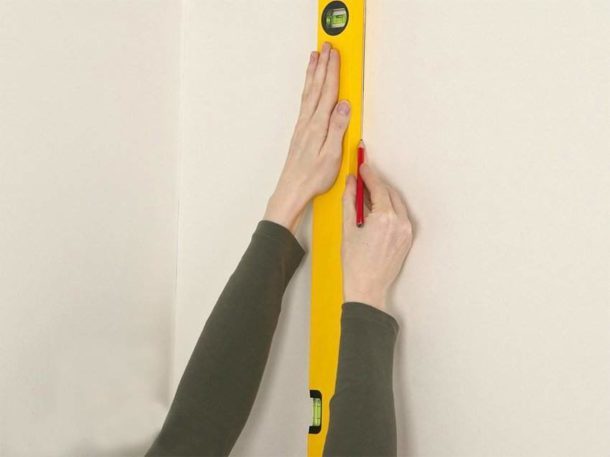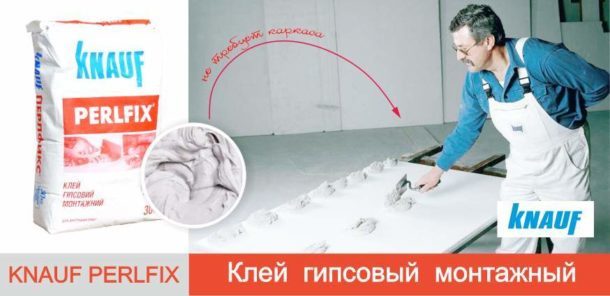Content
- Tool preparation
- Marking and measurements
- Wall preparation
- Drywall cladding
- The cost of wall decoration with drywall
During the overhaul of apartments, wall decoration plays an important role. It has not only aesthetic, but also practical purpose - leveling the surface. This process can be carried out both with plaster and with the use of drywall. There are several options for doing this work: wireframe method using a profile or wooden beams and a frameless method using glue. Each of these options deserves special attention and has both positive and negative sides. Those who decide to make repairs with their own hands with minimal time and effort will probably be interested in a method of decorating walls with drywall without using a frame and profile.

In order for the repair not to be delayed, and the result of its implementation was positive, you just need to adhere to a number of simple rules and stock up on the necessary tool.
Tool preparation
Such a simple inventory must be prepared before starting work:
- Impact drill or hammer drill.
- Spatula 100 mm wide.
- Hammer.
- Roulette 3 and 10 meters.
- Construction pencil.
- Clerical knife with a set of blades.
- The rule is 2.5-3 meters.
- Level 80 cm.
- Plumb line.
- Plastic bucket 10 l.
- Macro brush
- An even rail 0.5 meters long.
- Rubber mallet hammer.
- Beat cord.
Finishing material must be purchased after all measurements have been completed, since only after the measurements are completed will the exact quantity be known.

Marking and measurements
Like any other job, plasterboard wall cladding requires accurate measurements and does not endure haste. Regardless of whether you make repairs in an old apartment or a new building, initially you need to check the diagonals of the room where the walls will be faced.
USEFUL INFORMATION:How to glue a sickle on drywall: grouting seams
It is the measurement of the diagonals that allows you to find out how correct the perimeter of the room is: it has the shape of a rectangle with angles equal to 90 degrees, or a trapezoid with sharp and obtuse angles.
In order to know this, it is necessary to measure the distance between two diagonally opposite angles, write down the length. Then repeat the same procedure with the two remaining corners. The length of the two diagonals, as well as the length of the opposite walls, should be the same. This will mean that the room is aligned, and you can go to the next stage.

If the length of the opposite walls or two diagonals does not match, the following steps must be taken:
- Having measured the length of the walls opposite each other, it is necessary to find out which one is shorter, and write down the minimum size.
- On a wall that is longer, measure this distance and put a mark with a pencil.
- Repeat also with two other walls.
- Using a beating cord, design the perimeter of the room on the floor using the marks left on the walls.
- Measure the diagonals again.
After performing the above steps, the diagonals should align. Otherwise, one or two of the sides must be evenly shifted to the side until the diagonals are fully consistent.
When the correct perimeter of the room is drawn on the floor, we draw a vertical level on the wall from each drawn corner using a plumb line. Due to the fact that the top of the wall may be littered inside the room, the vertical may not coincide with the angle drawn on the floor. In this case, it will be necessary to shift the drawn perimeter from both sides by the same distance. When all the planes are aligned, you can begin to measure.

The distance between the drawn lines on the wall will allow you to determine the required amount of GCR, and the distance from the wall to the perimeter drawn on the floor will show how much glue needs to be purchased.
USEFUL INFORMATION:Wallpaper design: interior design
Wall preparation
In a new building, walls do not require special preparation. It is necessary to remove the remainder of the solution (if any) from the sheathed surfaces and primed well with a deep penetration primer.
Old apartments have a bit more work. First of all, you need to remove old wallpaper with a spatula from the walls. This will be easier to do if the wallpaper is preliminarily moistened with plenty of water with the help of a macrowell. After that, you need to check the walls for bloating of the old plaster. This is easy to do by lightly tapping them with a hammer. Sprinkled areas should be well cleaned of dust, and then carefully primed all the walls.
Important! To simplify the work, it is recommended to screw in the wall screws that will play the role of beacons. Screws are screwed to the desired depth in the amount of 6 pieces per sheet. Subsequently, when the drywall is glued to the wall, such beacons will not allow the sheets to warp and sink during their pressing.
If the walls do not require installation of additional wiring, then you can proceed to their cladding.

Drywall cladding
Having completed all the tips listed above, it will not be difficult for anyone to bring the job to the end.
What can be used for gluing drywall to the wall?
- For height differences up to 4 mm putty "Knauf Fugen" (or other quality gypsum composition), diluted to a creamy consistency, which is applied evenly on the entire surface of the drywall sheets or immediately on the wall.
- For differences up to 20 mm, “Knauf Perflix” glue or its equivalent is used to fix the sheets. It is applied to the wall or drywall with separate cakes, the distance between which should be 30–35 mm.

- If the height difference is greater, the glue consumption will be too high. Therefore, to reduce the cost and simplify the process of gluing GCR trimming on the wall with a width of about 10 cm. You can use several of these pieces glued to each other, their number will depend on the magnitude of the differences.
USEFUL INFORMATION:How to mount a TV on a drywall wall

Drywall glue is best applied directly to the wall. Moisture from the glue and the weight added by the glue can cause the sheet to break during installation.
After applying glue with cakes on the wall surface, it is necessary to apply drywall, focusing on the marks on the wall and floor.
Important! Drywall sheets are placed on the wall so that cruciform joints do not work out. In addition, you need to indent from the floor and ceiling and leave slits of 1-1.5 cm, placing pieces of drywall under the sheets. These gaps are subsequently plastered or covered with skirting boards.

Each sheet of drywall must be checked not only on the vertical level, but also on the common plane, using a long rule. In order for the sheet to become as it should, a rubber mallet is tapped on it. If you use screws as beacons, operation is simplified. After checking the evenness of the sheet using the level, you can go to the next sheet.
Only after drying (the glue heats up and heats the gypsum when hardening) can you start sealing joints between drywall sheets.
The cost of wall decoration with drywall
If you have not decided yet, to finish the walls with plasterboard without using the frame yourself or consult a specialist, we suggest that you familiarize yourself with the approximate cost of services:
• in Moscow - from 250 rubles. for 1 square. m;
• in St. Petersburg - from 220 rubles. for 1 square. m
In other regions of the country, the prices for installing drywall on the walls using glue vary greatly.


